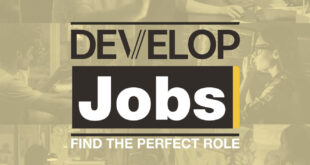Payload art director Jason Howard offers his advice on polishing your portfolio, creating a suitable online gallery, what your best work should be, and how to showcase it and make it stand out online
1. Your Portfolio
The key to creating a good portfolio is having the right content to put into it. In that respect, artists are luckier that other disciplines.
If you are right for the role, it will shine through from your portfolio far clearer than C# experience will from a designer’s CV.
If you are not right for the role, your portfolio will save a lot of wasted time for everyone involved.
2. Personal Work
The trick is to have good work – and you can’t produce that in a couple of weeks when you decide to apply for a job.
Creating your portfolio is a lifelong task and does require some effort. All the good artists I have met and hired spend their free time working on personal projects.
If you’re a frustrated junior lamp-post artist on a racing game but have dreams of working on epic fantasy RPGs then personal work will allow you to show that in your portfolio.
Don’t just see it as creative indulgence, though: raise your quality bar.
Take a look at the Polycount ‘What are you working on?’ forums, watch some tutorials, investigate current workflows and aim to compete with the best artists in the industry.
In a year’s time you’ll have some real meat for your portfolio and a lot more experience and technical insight.
3. Online
I’ve had many discussions about how portfolios are presented online. Lots of artists have a website but, unless you are looking for freelance work, a simple blog or a Behance page are adequate for an online portfolio.
The important thing is to keep it clear and concise. The aim here is to let a potential employer see your work as easily as possible. Assume anyone looking at your portfolio probably has little time and little bandwidth; a six-second transition from a thumbnail to the image is probably going to get annoying and having to use plugins – no matter how quickly they install – might not happen.
Never forget that you are applying for an artist’s role, not a job as a web developer. The closer the page feels to Windows Explorer, the more likely the viewer is to look at all your work.
4. Editing Content
Once you have put your portfolio together, you need to edit the content. You will probably have put too much work in there and there will be a variable quality level. Quality trumps quantity here.
Talk to your friends. Ask them, for example: “If you had to take half the images out, which ones would you remove?” If you do that with a few people you should start to get a good idea of what work isn’t so good. Act on it; it may be painful, but a bad piece of work can really drag the whole portfolio down.
5. NDAs
Don’t put anything that’s under NDA online – that’s unprofessional. If you are not sure, ask your line manager. Also ask if you can take work to show in person at an interview in lieu of having it in your portfolio – if so, make sure a potential employer is aware that you have more current work to show at your interview.
6. Consistency & Range
Try to show a range of genres in your portfolio. A few years ago, I was interviewing for a graduate intern. After trawling through endless concrete buildings with photo reference textures, I saw a portfolio that had the usual concrete buildings but also featured a fairy wood with hand-painted textures, so – unsurprisingly – that was the artist that got the internship.
One good piece of work is better than three mediocre ones, and two different pieces of work are better than three similar ones.
7. Technical Ability
If you have 3D work, show it in-engine. A high-end render is no better than an un-lit asset as far as games development is concerned. Put your work into Unity or Unreal, get the shaders working, get the lighting working, put some VFX onto it. The level of confidence this will bring to a potential employer is massive.
Investigate current practice and then explain your pipeline. If you are going from Max to Z Brush to X Normal back to Max and then to Photoshop and finally to Substance Painter then point that out – it will speak a lot about your understanding of how art is made.
8. Persistence
Don’t give up. Finding the perfect job is not a task that can be completed in a couple of weeks or months – it is a career-long endeavour.
Be patient and take your time. Grab whatever professional experience you can, keep up with the industry, find out how other people make game art, practice your skills, grow your portfolio and work hard – you will get there.

 MCV/DEVELOP News, events, research and jobs from the games industry
MCV/DEVELOP News, events, research and jobs from the games industry

